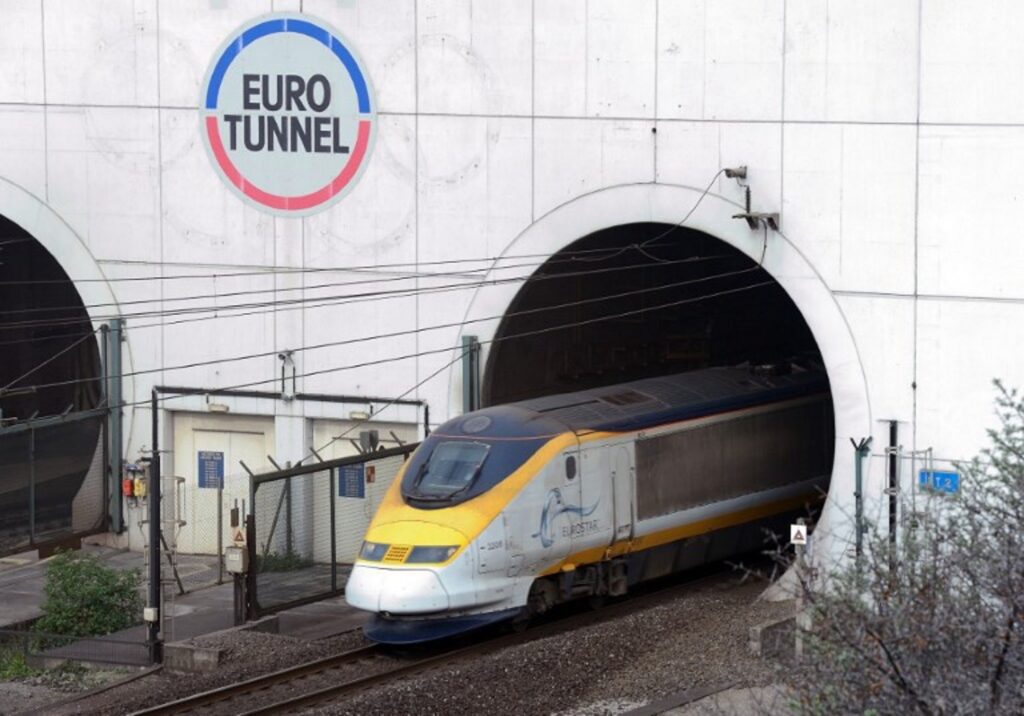More than 10.7 million passengers have travelled on a Eurostar train, and 3.5 million trucks and passenger vehicles were transported under the Channel in 2023.
The Eurotunnel is now an integral part of the European rail landscape, providing a fast connection between the continent and Great Britain.
30 years ago, on 6 May 1994, the infrastructure was inaugurated by the Queen of England, Elizabeth II, and the French President, François Mitterrand, putting the finishing touches on a project that had been in the pipeline for almost 200 years.
The tunnel is operated by the Franco-British company Eurotunnel, a subsidiary of Getlink. Around 400 trains a day currently pass through the tunnel, and the operator believes that the total could rise to 1,000 trains thanks to the modernisation of the tunnel's power supply. That is the target for the next decade.
The ambition is even broader, since Eurotunnel believes it will be able to double the number of destinations served to Great Britain within 10 years (to German, Swiss, and even French cities) and anticipates the arrival of competitors to Eurostar within five years.
The infrastructure is 50.45 km long, including 37.9 km under the English Channel. Although it was dug 40 metres into the rock and under tonnes of water, the tunnel's completion is breathtaking. A budget of more than €15 billion (almost double the forecasts), 55,000 m³ of sludge removed, 6,000 metric tonnes of rails installed, and 170,000 m³ of concrete poured were all needed to build it, with the contribution of some 12,000 people.
The tunnel required the extraction of over 10 million metric tonnes of chalk using 11 tunnelling machines. The debris, measuring three times the volume of the Great Pyramid of Giza, was removed to create the tunnels.
The tunnel was built by TransManche Link (TML), a consortium of ten public works companies (five British and five French). It took more than six years to complete the structure: a South-North rail tunnel (France-England), a North-South rail tunnel (England-France) and a service tunnel. The three tunnels were bored into the seabed and link Coquelles in Pas-de-Calais to Folkestone in Kent.
"This is the first time in history that the Heads of State of France and Great Britain have met without having to take a boat or a plane," said Queen Elizabeth II at the inauguration after crossing the Channel by train. "This new communication route is an exemplary precursor of a Europe at the cutting edge of technology... It could do so much more! United and mutually supportive," added the French head of state, François Mitterrand.
Several projects (more than 130) have been put forward to link Great Britain and the European continent. The first sketches date back almost 200 years. The French engineer Aimé Thomé de Gamond was one of the first, in 1833, to suggest the idea of a bored tunnel.
Between then and the completion of the Eurotunnel, work began on two occasions, in 1881 and 1975, before being abandoned. It was not until 20 January 1986 that the project was ratified in an agreement between British Prime Minister Margaret Thatcher and François Mitterand. Work began on 15 December 1987 and was completed on 10 December 1993. The section was opened to traffic on 1 June 1994.

